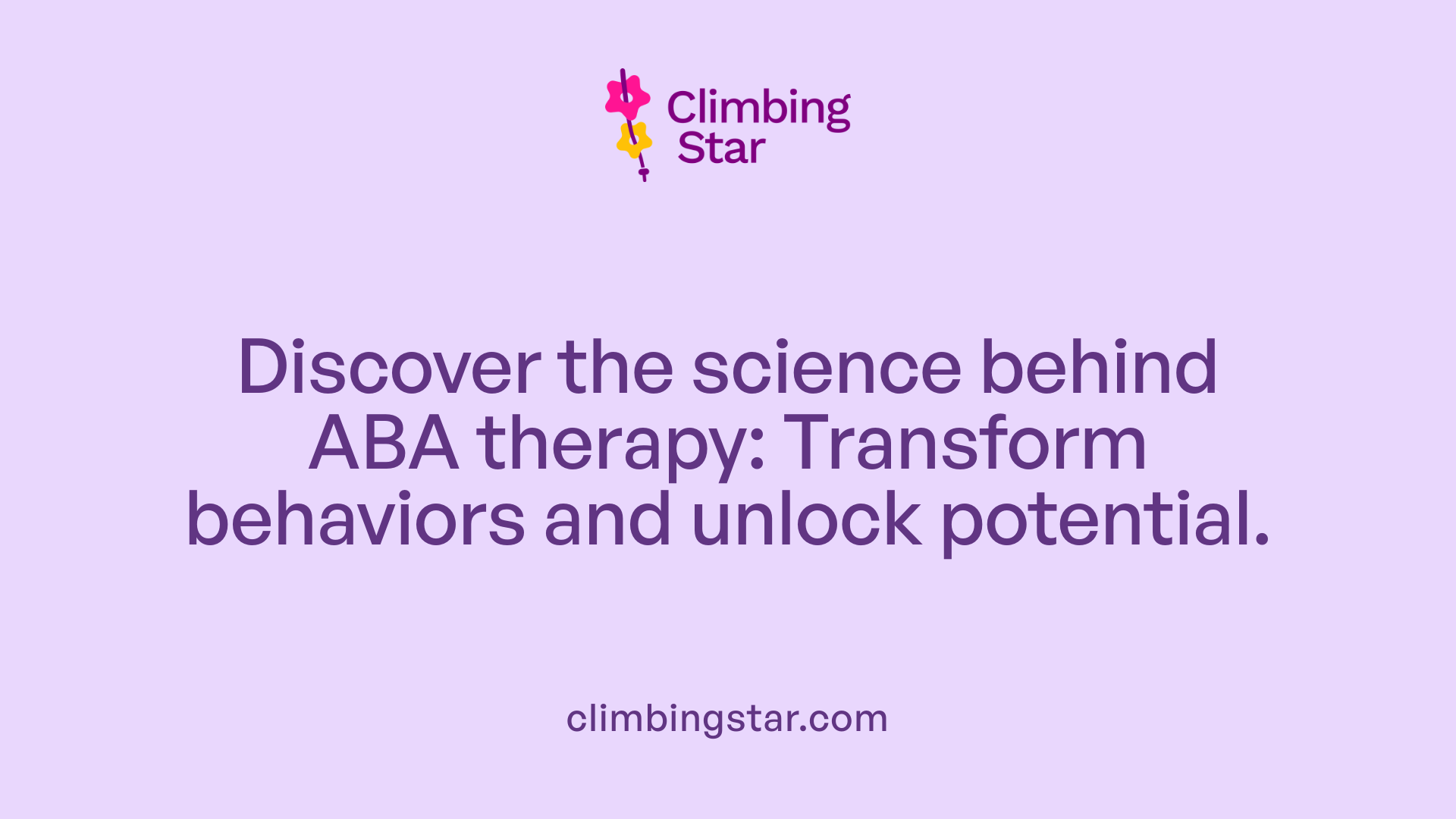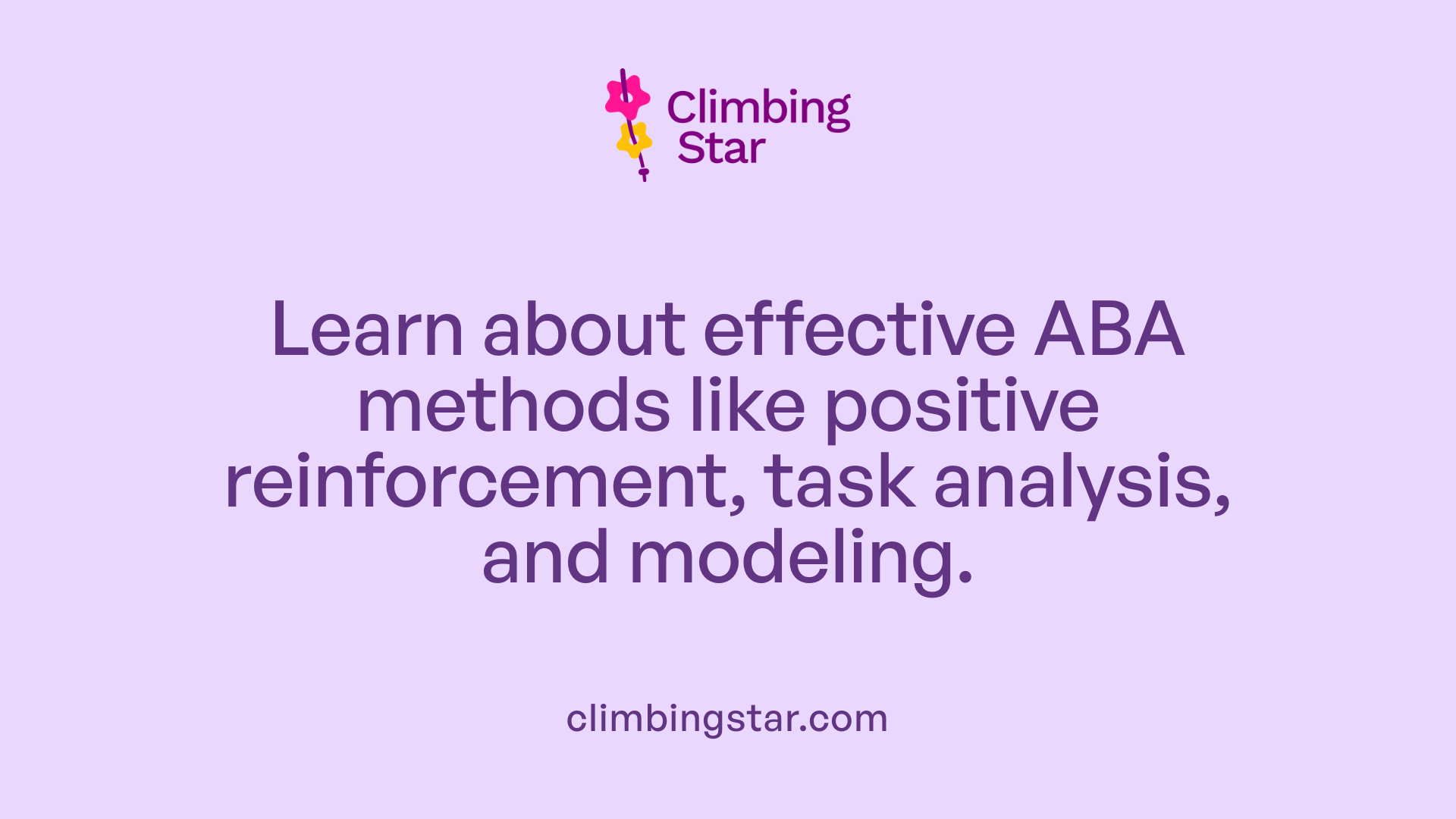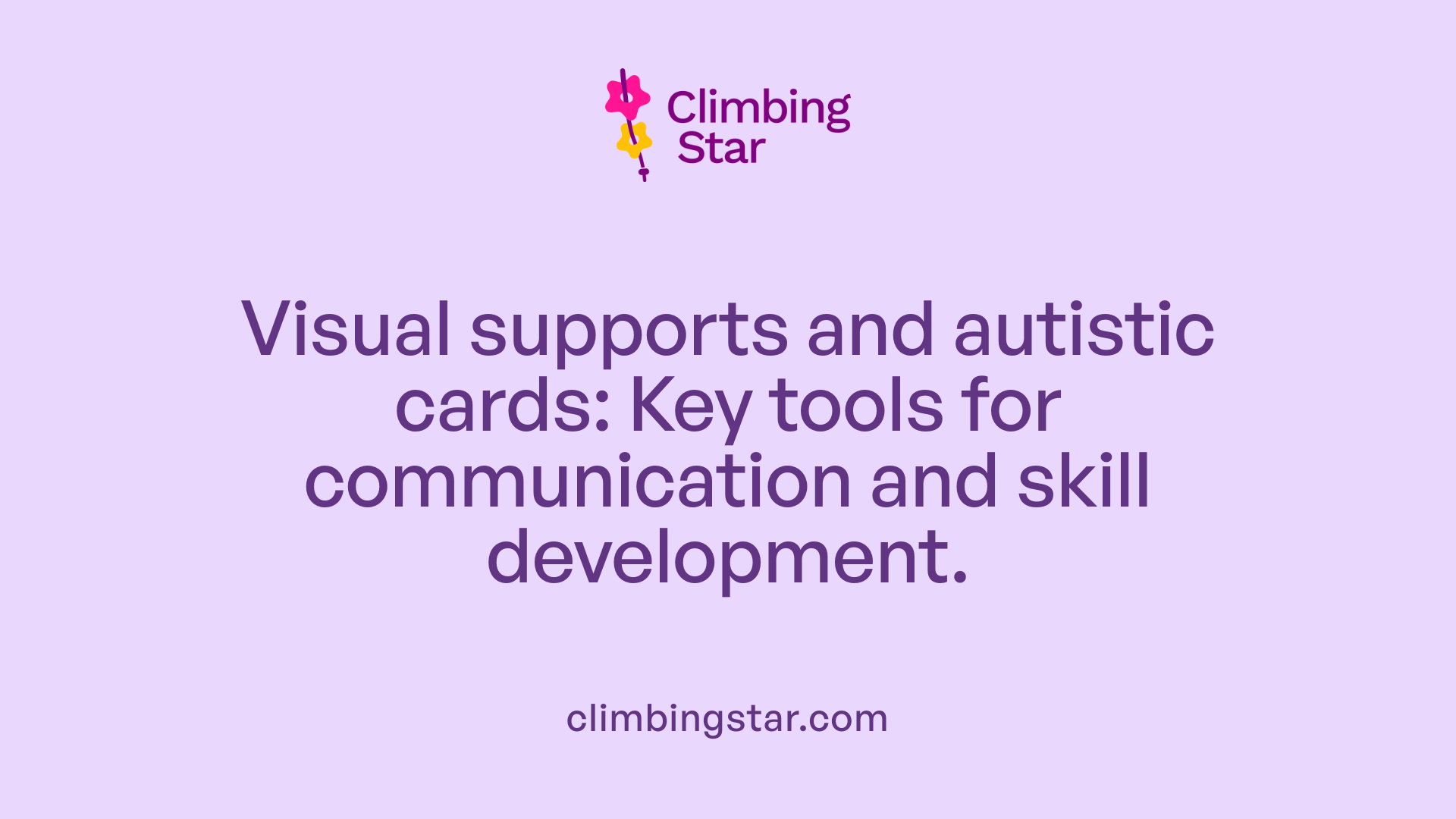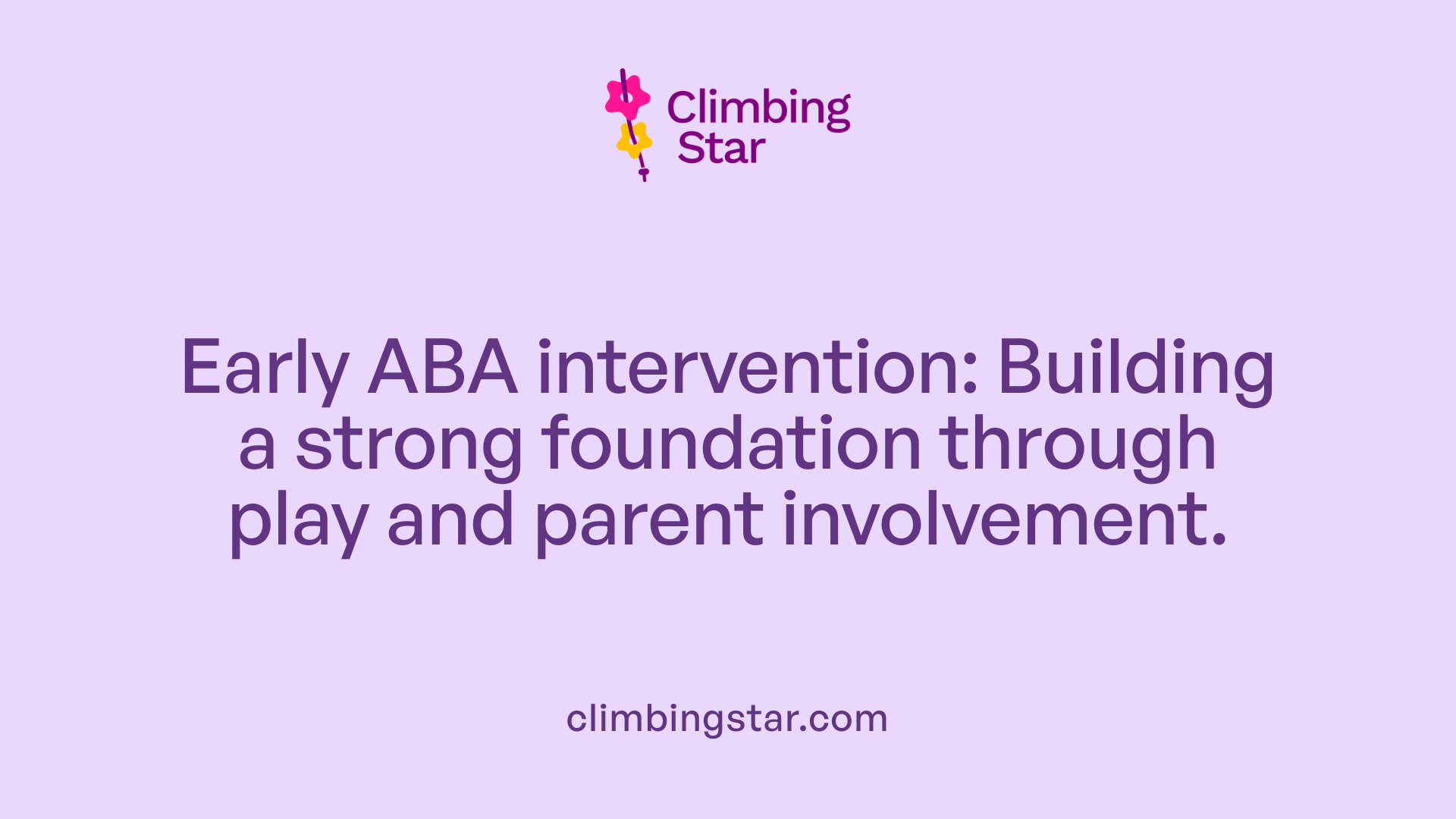Introducing Autistic Cards in ABA Therapy
Applied Behavior Analysis (ABA) therapy stands as the most widely recommended intervention for individuals with autism spectrum disorder. Among its many techniques, the use of visual supports, such as picture cards or schedules—colloquially known as autistic cards—plays a pivotal role in facilitating communication, teaching daily living skills, and supporting behavioral interventions. This article explores how autistic cards are integrated within ABA therapy, their benefits, and how they contribute to independence and learning for people with autism.
What is Applied Behavior Analysis (ABA) Therapy?

What is applied behavior analysis (ABA) therapy?
Applied Behavior Analysis (ABA) therapy is a science-based intervention focused on improving socially important behaviors, especially in individuals with autism spectrum disorder (ASD). ABA uses the principles of learning and behavior to teach necessary skills and reduce behaviors that interfere with daily living. It relies on detailed behavior assessments, such as Functional Behavior Assessment (FBA), to understand the context of behaviors and design individualized programs.
How does ABA promote positive behavior change?
A core element of ABA is positive reinforcement—rewarding desired behaviors to increase their occurrence. Therapists use reinforcement strategies alongside tools like task analysis, which breaks down complex activities (e.g., brushing teeth or putting on pants) into manageable steps. This approach helps children acquire essential life skills in a supportive, gradual manner.
What role do qualified professionals play in ABA therapy?
ABA programs are tailored by qualified professionals, primarily Board Certified Behavior Analysts (BCBAs). They oversee therapy by setting personalized goals, selecting appropriate techniques, and continuously monitoring progress through data collection. This ensures treatment adjusts to the individual's changing needs and maximizes positive outcomes.
ABA is widely recognized as an evidence-based and effective treatment, supported by organizations like the US Surgeon General and the American Psychological Association. It can be delivered in various settings—home, school, and community—making it a flexible and comprehensive approach to improving communication, social interaction, and daily living skills for those with autism.
How ABA Therapy Benefits Individuals with Autism

How does ABA therapy benefit individuals with autism?
ABA therapy offers a range of benefits for individuals with autism by focusing on increasing helpful behaviors and reducing harmful or disruptive ones. Through science-based techniques like positive reinforcement, therapists encourage the repetition of desirable behaviors by rewarding efforts such as communication attempts or social interactions. This structured, individualized approach helps develop essential skills across various areas.
Improvements in communication, social interaction, and daily skills
ABA therapy targets key areas like language development, social skills, and daily living activities. Therapists use strategies such as task analysis to break down complex tasks into manageable steps, making it easier for children to learn how to brush teeth, dress, or eat independently. Incorporating visual supports and natural learning opportunities further enhances skill acquisition. For young children, therapy often involves play-based learning and short, frequent sessions to build basic communication and social skills in an engaging way.
Reduction of harmful or disruptive behaviors
By utilizing tools like Functional Behavior Assessment (FBA), therapists collect data to identify triggers of problematic behaviors. They then design Behavior Intervention Plans (BIP) that guide caregivers and therapists in managing these behaviors. The focus on understanding antecedents and consequences fosters positive behavior changes and aids in promoting independence and joy.
Early intervention and long-term outcomes
Early assessment and intervention are crucial in achieving better developmental outcomes. Initiating ABA therapy at a young age—often around 2 years old—leverages natural learning through play and everyday activities, which can lead to significant gains in communication, attention, and social functioning. Early intensive involvement is supported by substantial scientific evidence as it enables children to reach milestones earlier and more effectively.
Impact on quality of life and independence
ABA therapy is designed not only to teach skills but also to enhance the overall quality of life. By increasing independence in daily routines like dressing or hygiene and improving social interactions, individuals with autism can experience more autonomy and joy. The therapy’s flexible nature allows it to be personalized and implemented across settings such as home, school, and community, promoting consistent progress.
| Benefit Area | Description | Examples |
|---|---|---|
| Communication & Social Skills | Enhances language, interaction, and memory | Using picture cards to support nonverbal communication |
| Daily Living Skills | Teaches self-care tasks through task analysis and visual aids | Brushing teeth, dressing independently |
| Behavior Management | Identifies and modifies disruptive behaviors via BIPs | Reducing tantrums, increasing cooperation |
| Early Intervention | Supports early learning stages for improved long-term outcomes | Play-based learning for toddlers |
| Quality of Life & Independence | Encourages autonomy and happiness through skill development | Completing daily routines, social engagement |
Common Techniques Utilized in ABA Therapy

What techniques are commonly used in ABA therapy?
Applied Behavior Analysis (ABA) therapy employs several well-established methods designed to foster learning and encourage positive behavior in individuals with autism.
Positive Reinforcement and Prompting
Positive reinforcement is central to ABA. Desired behaviors are encouraged by rewarding them, which increases the likelihood they will be repeated. Prompting involves helping the learner complete a task, then gradually reducing assistance (fading) to promote independence.
Task Analysis and Chaining
Complex activities are broken down into smaller, manageable steps through task analysis. Behavior chaining then teaches these steps sequentially, either forward (starting with the first step) or backward (starting with the last). This approach helps children master daily living skills with less overwhelm.
Discrete Trial Training and Modeling
Discrete Trial Training (DTT) is a structured technique where skills are taught one at a time using clear instructions and consistent consequences. Modeling involves demonstrating the desired behavior for the learner to imitate, often supported with video modeling.
Natural Environment Teaching and Communication Systems
Natural Environment Teaching (NET) uses real-life settings and everyday activities to encourage skill development. Tools like the Picture Exchange Communication System (PECS) and Functional Communication Training (FCT) support social and communication skills by using visual aids and teaching alternative ways to express needs.
These techniques are tailored to individual learning styles and needs, emphasizing gradual skill acquisition, independence, and meaningful social interactions for those undergoing ABA therapy.
The Integral Role of Autistic Cards in ABA Therapy

Use of Visual Supports Like Cards and Schedules
Visual supports such as picture cards and schedules play a crucial role in ABA therapy for individuals with autism. These tools provide a clear and predictable structure that helps children understand what to expect throughout their day. This predictability can greatly reduce anxiety and resistance during therapy and daily activities.
Facilitating Communication for Nonverbal Children
For children who are nonverbal or have limited speech, autistic cards serve as an essential communication aid. They enable children to express needs, choices, and emotions effectively, bridging communication gaps and promoting social interaction. Gestures paired with these cards further enhance their communicative value.
Enhancing Task Analysis and Daily Living Skill Teaching
Autistic cards are also integrated within task analysis—a method that breaks down complex skills into manageable steps. Visual cues support the child's learning process by clearly illustrating each step involved in tasks like brushing teeth, washing hands, or dressing. This makes skill acquisition more accessible and less overwhelming.
Reducing Overwhelm Through Visual Structure
By providing a step-by-step visual roadmap, these supports help children focus on one task element at a time. This breakdown reduces the feeling of being overwhelmed, which is often a barrier to learning new skills. The use of visual schedules can also foster independence and confidence by setting clear expectations and reinforcing progress.
In summary, autistic cards and other visual supports form an integral part of ABA therapy by making communication easier, structuring learning, and creating a calming environment conducive to skill development and behavioral growth.
ABA Therapy for Toddlers: Early Intervention in Practice

At what age can ABA therapy be started?
ABA therapy can begin at any age, but it is particularly effective when started early in a child's development. Most children enter ABA programs between ages 2 and 6, with the ideal window for early intervention being before age 4. Starting therapy at this early stage maximizes progress in communication, social interaction, and daily living skills. There are also approaches tailored for infants as young as 6 months, involving parent-guided naturalistic techniques to promote social communication.
Learning through play and everyday activities
For toddlers, ABA therapy often emphasizes learning through play and daily routines. Therapists use toys, games, and simple activities familiar to children to teach communication, social skills, and self-care. This naturalistic approach helps toddlers grasp skills in enjoyable, relatable contexts, increasing their engagement and motivation.
Short, frequent sessions to suit attention spans
Because young children have limited attention spans, ABA sessions for toddlers are typically brief but frequent. Short, consistent sessions help maintain interest and reinforce learning without overwhelming the child.
Parental involvement in therapy
Parents play a vital role in ABA therapy at this stage. They are considered essential partners in supporting their child's progress by practicing techniques and reinforcing skills at home. Therapists often train caregivers on using strategies like positive reinforcement and visual supports to extend learning beyond therapy sessions, fostering consistency and generalization of skills.
Who Provides ABA Therapy and How to Access It
Who Provides ABA Therapy?
ABA therapy is delivered by skilled professionals including board-certified behavior analysts (BCBAs), registered behavior technicians (RBTs), therapists, and specialized organizations focused on autism care. BCBAs develop and supervise individualized treatment plans that address each person's unique skills, challenges, and preferences. RBTs and therapists implement these plans directly, working closely with clients.
Where Is ABA Therapy Delivered?
ABA services are flexible and can take place in multiple settings tailored to the individual's needs. Common environments include homes, clinics, schools, and community spaces. Involving families in training helps promote the use of learned skills across different settings and daily life.
Why Are Assessments and Individualized Plans Important?
Detailed assessments are critical to creating effective ABA programs. These evaluations inform the design of personalized goals and interventions focused on improving communication, social interaction, daily living skills, and behavioral challenges. Individualized plans focus on each child's strengths and needs for optimal outcomes.
How to Verify Insurance Coverage and Evaluate Providers?
Many private insurance plans and Medicaid are now required to cover ABA therapy when medically necessary. Parents should check their insurance benefits, consult medical professionals, and verify if providers accept their coverage. When evaluating providers, questions should include staff qualifications, safety protocols, session structure, measurable goal setting, progress tracking, and insurance acceptance. Searching with queries like "ABA providers and service access" can help locate local qualified therapists and organizations.
These measures ensure families find trustworthy, effective ABA providers capable of delivering tailored support to children with autism and related developmental disorders.
Effectiveness and Evidence Supporting ABA Therapy
Is ABA therapy effective in treating autism?
Research strongly supports that ABA therapy is an effective intervention for many individuals with autism. It helps improve critical skills such as communication, social interaction, daily living skills, and adaptive behaviors by breaking down tasks into manageable steps and reinforcing progress through positive reinforcement. Evidence shows that early and intensive ABA, typically beginning between ages 2 and 6, can lead to significant developmental benefits.
What scientific support comes from leading organizations?
ABA therapy is recognized as an evidence-based treatment by major authorities like the US Surgeon General and the American Psychological Association. These organizations endorse ABA for its scientific foundation and demonstrated success, especially in early childhood and continuing up to about age 21. Moreover, many private insurance plans and Medicaid cover ABA services when prescribed as medically necessary, underscoring its established medical value.
What improvements have research studies demonstrated?
Research has documented improvements across various domains including language, attention, social competencies, memory, academics, and reduction of problematic behaviors. Through the use of structured techniques like task analysis, reinforcement, and natural learning opportunities, children with autism can acquire essential life skills efficiently. These measurable gains are supported by consistent data collection and progress monitoring.
Why is individualized and ethical application important?
Good ABA programs are tailored to the individual’s skills, preferences, and family context, designed and overseen by qualified behavior analysts (BCBAs). This individualized approach ensures goals and techniques meet each child's unique needs, making therapy both effective and respectful. Ethical considerations emphasize collaboration with families and adaptations to incorporate the child’s perspective and comfort.
What ongoing considerations exist for tailoring ABA treatments?
Tailoring ABA is an evolving process that includes ongoing assessments, revisiting behavior goals, and adjusting strategies as individuals develop. Therapists may use naturalistic teaching, visual supports, or play-based activities to increase engagement and skill generalization. Open communication among therapists, caregivers, and medical providers is crucial to maximizing each child's progress while respecting their individuality.
| Aspect | Description | Importance |
|---|---|---|
| Scientific Backing | Endorsed by Surgeon General & APA | Establishes credibility and effectiveness |
| Early Intervention | Intensive ABA between ages 2-6 yields best outcomes | Promotes developmental gains |
| Individualization | Programs customized by BCBAs based on assessments | Ensures therapy fits unique needs |
| Reinforcement Strategies | Use of positive rewards to encourage desired behaviors | Supports learning and motivation |
| Ethical & Collaborative Approach | Involves family input and respects child’s perspective | Maintains ethical standards and enhances success |
| Data-Driven Adjustments | Continuous monitoring and revising goals | Enables responsive and dynamic treatment plans |
The Transformative Power of Autistic Cards within ABA Therapy
Autistic cards symbolize an essential bridge in ABA therapy, transforming complex learning and communication challenges into manageable, rewarding experiences for many individuals with autism. By integrating these visual tools with evidence-based, individualized ABA interventions, therapists and families can foster greater independence, reduce frustration, and nurture everyday skills that empower children and adults alike. As ABA therapy continues to evolve, the thoughtful use of autistic cards demonstrates the ongoing commitment to meet diverse needs with compassion, science, and creativity, reinforcing ABA's pivotal role in enhancing lives across the autism spectrum.
References
- Author: Big Leap
- Task Analysis in ABA Therapy: Strategies and Examples
- What Does ABA Therapy Look Like for a 2 Year Old?
- Applied Behavior Analysis (ABA)
- Applied Behavior Analysis (ABA)
- Applied Behavior Analysis (ABA)
- 6 Benefits of ABA Therapy for Children with Autism
- Applied Behavior Analysis (ABA) for Children With Autism
- ABA Therapy Age Limits & Age Range Based on Evidence
- Applied Behavior Analysis (ABA) for Children With Autism







